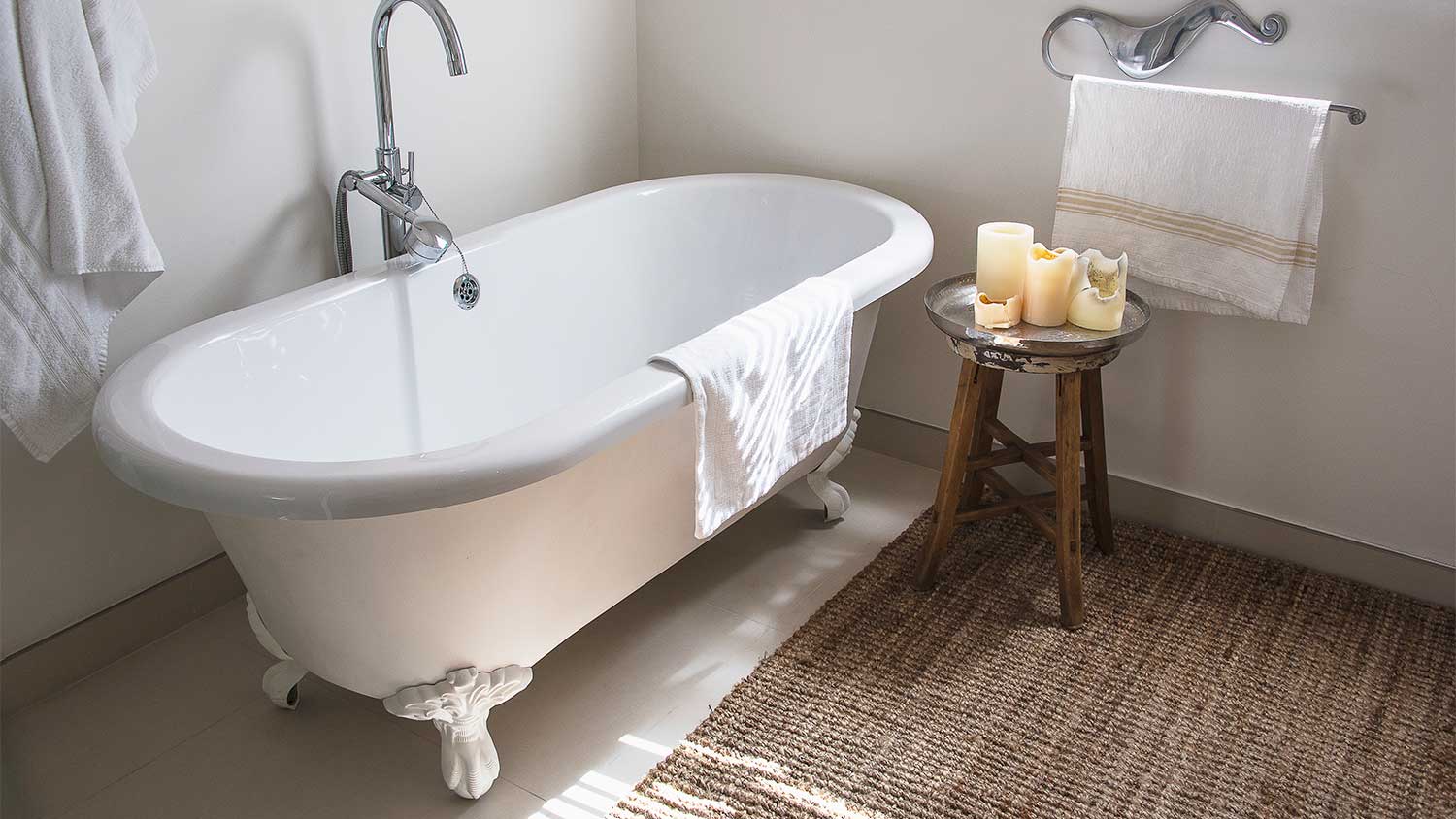
Various factors affect the total tub-to-shower conversion cost, including the size of the area, type of shower, materials, and labor fees.
Restore your grout’s shine with this step-by-step guide


Whether you’re looking to freshen up a tile floor or breathe new life into a kitchen backsplash, staining the grout is a good way to do it. Even better? You can knock out this beginner-friendly DIY project with a handful of basic tools and supplies. If you’re ready to get started, here’s how to fix discolored grout with grout stain.
Heads up: Staining grout only works on unsealed grout with minor or moderate discoloration. If you have sealed or heavily damaged grout, you need to replace it (instead of staining it)

When staining grout, it’s important to clean it first. Otherwise, the stain might not adhere properly. There are several ways to clean grout, but using a commercial grout cleaner is one of the most effective—and easiest—options.
Before using grout cleaner, put on rubber gloves and safety goggles to protect your skin and eyes from the chemicals. Then, follow the instructions listed on the packaging. This involves applying the cleaner to the grout lines, letting it sit for several minutes, scrubbing it with a grout brush, and rinsing the area with water.
When you finish cleaning the grout, let it dry fully before moving on to the next step. You should wait two to three days.
While wearing your gloves and safety goggles, apply a small amount of grout stain to a hidden part of your tile to make sure it’s the right color. In a kitchen, you could test an area under the refrigerator. In a bathroom, you might apply the stain behind the toilet.
Working in sections of 1 square foot at a time, use an old toothbrush to apply stain to the grout lines. As you go, remove any excess stain from the grout lines and tiles with a damp cloth. Rinse the cloth often to keep it clean.
When you’re done applying the stain, let it sit according to the manufacturer’s instructions. Depending on the product, this can take several hours.
If you’re applying a lighter-colored grout over a darker one, you may need to use multiple coats of stain.

Some grout stain products include a built-in sealer. If yours doesn’t, you can apply a grout sealer after the stain dries. Sealing helps keep your grout clean and protects it from water, stains, and wear and tear.
Staining discolored grout doesn’t require any specialized skills or prior experience, so it’s a great DIY project. You can pick up all of the necessary tools and supplies at your nearest home improvement store for less than $100.
However, if you’d rather not spend hours on your hands and knees scrubbing grout, you could hire a local grout repair pro instead. On average, cleaning tile and grout costs $50 to $720 for a kitchen or $30 to $180 for a bathroom. You’ll also need to budget for recoloring the grout, which costs an additional $1 to $2.50 per square foot.
From average costs to expert advice, get all the answers you need to get your job done.

Various factors affect the total tub-to-shower conversion cost, including the size of the area, type of shower, materials, and labor fees.

Finishing an attic can make a great addition to your home. This guide breaks down the cost to finish an attic, including labor, materials, and more.

If your bathroom needs sprucing up, a new vanity will make a big difference. Vanity installation costs depend on the size and type of the countertops and fixtures you choose.

An updated bathtub can give a bathroom a whole new look. Find out how much it costs to replace a bathtub in Seattle, WA, including prices by type and labor costs.

This prep and staging area has numerous uses in the versatile modern home. Here’s what a butler’s pantry does and how you can add one to your home.

An updated bathtub can give a bathroom a whole new look. Find out how much it costs to replace a bathtub in Kansas City, MO, including prices by type and labor costs.